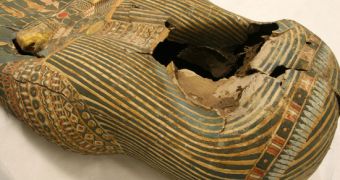It turns out Lego isn't just for fun. On the contrary, these toy building bricks can be made to serve some very serious purposes. Not to beat about the bush, it appears that archaeologists in England have used them to restore a 3,000-year-old mummy sarcophagus belonging to a pharaoh named Hor.
The Fitzwilliam Museum in Cambridge specialists who worked on this project explain that, although this sarcophagus has been in the museum's possession for many years, it has never before been put on exhibit.
Thus, because it had partly collapsed around the chest and the face as a result of degradation that took place in time, the mummy case has long been considered unsuitable for public display.
In order to restore it, archaeologists had to use water. Specifically, they exposed the cartonnage to humidity, and then waited for it to partly soften.
This made it possible for specialists to manipulate it and reshape it, Gizmodo tells us.
Interestingly enough, the restoration work was carried out while the sarcophagus was suspended face-down from a frame built by David Knowles, a student at the University of Cambridge's Department of Engineering.
This measure helped ensure that the sarcophagus would not further collapse once its cartonnage began to soften.
Once the restoration work was done with, the archaeologists and David Knowles had to figure out a way to make sure the mummy case would never again collapse under its own weight and need to be fixed.
To solve this problem, David Knowles used Lego to build supporting structures, which now sit inside the sarcophagus and support it.
“Six light, ingenious little structures made from LEGO have been placed inside the chest cavity. They are adjustable using screw threads, and are padded with archival foam where they are in contact with the ancient surface,” the Fitzwilliam Museum explained.
The mummy sarcophagus has also been placed inside a display case, which was also built by David Knowles, and is now on exhibit.

 14 DAY TRIAL //
14 DAY TRIAL //